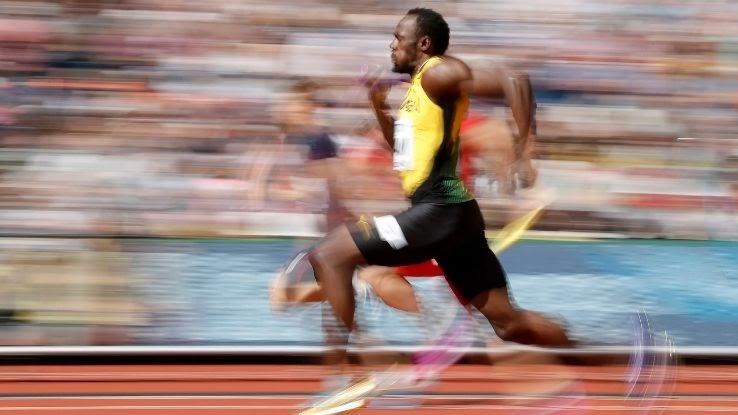Individual, Dual & Team Sports: What Are the Differences?

Sports — you either love them or you were the person who hid in the locker room during P.E. class. Some are individual sports in which one athlete competes on their own. Other sports are dual sports in which two athletes compete against each other or as a team against another team of two people. Both of these are distinct from team sports, which involve larger numbers of athletes working together against an opposing team made up of an equal number of competitors.
The main difference between individual and dual sports is the number of athletes who compete on the same side. However, each sport type comes with plenty of benefits and challenges. To better understand this concept, learn more about individual, dual and team sports in more detail, including their differences, similarities and benefits.
What Are Individual Sports?
Individual sports are defined as activities in which competing as a part of a team isn’t required. The athlete is on their own and is the one who’s responsible for bringing home the win. Although individual sports can be competitive, the athlete is also in competition with themselves.

Practicing a sport individually requires plenty of motivation in order to develop the skills that are needed to progress in the activity. Along with gaining additional skills, two other main benefits of individual sports are self-discipline and mental focus. The more you practice, the better you can get, and you’re the one who’s responsible for reaching your goal.
However, one primary disadvantage of individual sports is that same responsibility — if you take competitions seriously and lose, you’re responsible — and it can be hard to push yourself to keep improving at times when you’re only holding yourself accountable.
Examples of popular individual sports include:
- Skiing
- Snowboarding
- Running
- Swimming
- Bouldering
- Archery
- Gymnastics
- Weightlifting
Sometimes, as in the case of gymnastics, individual athletes compete but are members of a larger team — they’re just performing, competing or being judged on their own. But typically, just because you’re not a part of a big team when engaging in most individual sports, it doesn’t mean that you can’t achieve great things. Just take it from some of the biggest stars of individual sports. Usain Bolt is the fastest runner on the planet. He expressed that being a winner doesn’t come easily, saying, “Yes, it looks easy. But it’s not. There’s a lot of work and dedication. It’s rough. I want people to understand that what they see on the track is because I work so hard to get there.”
What Are Dual Sports?
Compared to individual sports, there aren’t as many dual sports out there — but dual sports can take several different forms. In one form of dual sports, a single athlete competes against another single athlete; there’s no team, just two athletes against each other in a one-on-one match. Dual sports can also involve two athletes on the same team competing with two athletes of the opposite team, known as two on two.

Examples of some of the most popular dual sports include:
- Chess
- Table tennis
- Tennis
- Badminton
- Racquetball
- Fencing
- Beach volleyball
Dual sports come with many benefits. Not only do they encourage a lot of discipline, but they also involve utilizing analytical skills and studying what’s needed in order to beat your opponent. For example, one such sport is tennis. While bringing your own skills to the court is impressive, you also have to know something about whom you’re competing against. You can then make their weakness your strength and study their techniques to overcome them during play. If you’ve seen Netflix’s The Queen’s Gambit, you can see how this applies to chess, too.
Playing as a duo also comes with many benefits. If the two players are able to complement each other and work as a team, planning out strategies and anticipating each other’s movements, they can really bring the best out of every game. However, when one player is off their game for that day, it can affect both teammates. Cooperation is extremely important in dual sports, and it’s essential to get along with your teammate before trying to compete.
What Are Team Sports?
As the name suggests, team sports involve a larger group of people working together and competing against another large group (or several). Often the most popular sports to play and the most entertaining to watch, team sports such as football, basketball and baseball have large fan bases that cheer on their favorite squads.

An individual or dual sport can cross over to a team sport. For example, when you’re playing tennis at the Olympics, you’re competing on an individual level. But your score also contributes to your country’s team score as a whole.
Examples of some of the most popular team sports include:
- Basketball
- Football
- Baseball
- Handball
- Hockey
- Volleyball
The main benefit of team sports is teamwork. Working together encourages communication, problem-solving and putting aside your differences to reach the common goal, which is to win. A good team can motivate all its members and hold them accountable. However, if this backfires, it can show as a major disadvantage. When members of the team don’t get along, it can affect their overall performance. If one person isn’t bringing their A-game, it may demotivate the rest. Large teams also often need the oversight of a coach in order to perform their best together. If a coach is good at their job, they’ll bring out the best in the teammates. However, if they’re ineffective, they can bring the whole team down.





